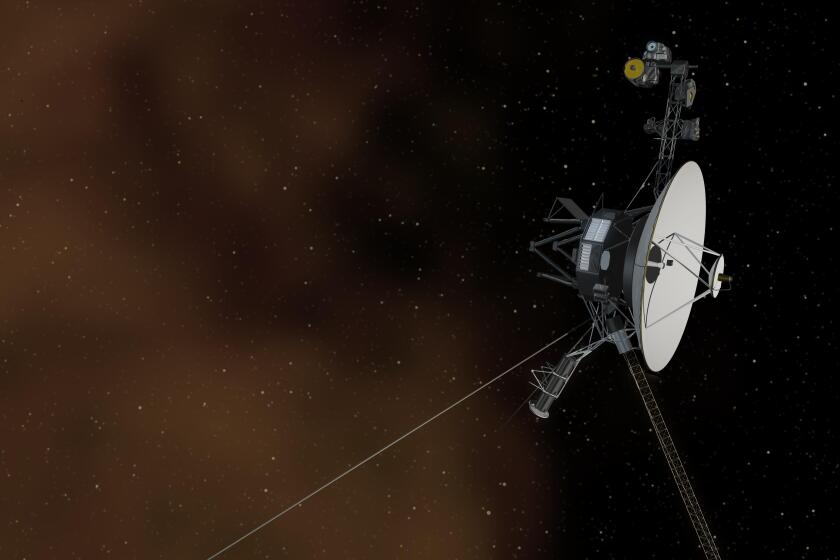A rich scientific harvest is in: Long, complex bread wheat genome is finally sequenced
It has been called the Mt. Everest of the genome world, and it has just been scaled.
This week, a consortium of more than 200 scientists from 20 countries published the first fully annotated sequence of the massive bread wheat genome, a feat they hope will eventually reduce the risk of food scarcity on our planet.
Experts said the new, publicly available genome will help breeders improve the nutritional value and disease resistance of the most widely grown crop in the world, which accounts for about 20% of the total calories consumed by humans across the globe.
“For the first time, we have coordinates for all the genes that tell us where they are on the chromosomes,” said Jorge Dubcovsky, a wheat geneticist at UC Davis who was not involved with the work. “There are a lot of things we can do a lot faster now that we have this genome.”
The bread wheat genome is the most complicated plant genome to be sequenced to date, said Kellye Eversole, director of the International Wheat Genome Sequencing Consortium, who oversaw the project.
The grain’s genome is exceedingly long — 40 times longer than the rice genome and five times longer than the human genome.
It is also extraordinarily complex. It consists of three distinct subgenomes and contains many repetitive sequences.
“The different subgenomes are about 97% identical, and that was a big part of the problem,” Dubcovsky said. “It is difficult to put together a puzzle when so many of the pieces look the same.”
To tackle this challenge, wheat researchers from around the world formed the International Wheat Genome Sequencing Consortium in 2005.
To make the task of sequencing the monster genome more manageable, the group decided to give collaborators just one of wheat’s 21 chromosomes, or packages of DNA, to decode.
“Generally, different countries took on a chromosome. So Australia got 7A, Norway got 7B, Japan had 6B, etc.,” said Rudi Appels, a professor of genetics at Murdoch University in Perth, Australia, who helped lead the effort.
In the years since the project launched, other groups have claimed to have assembled the full wheat genome. But the new version, published Thursday in Science, is far more complete and detailed, the authors said.
Their genome includes the order of the DNA bases on each chromosome, as well as where different clusters of genes are found on each of those chromosomes.
“We now know the exact position of the approximately 108,000 wheat genes, and we know their direct genomic sequence context which contains all the information about how genes are regulated in time and space,” said Nils Stein of the Leibniz Institute of plant genetics and crop research in Germany, who worked on the study.
Appels equates the new work to having a Google map of the plant’s genome.
“We can navigate to any point on the map, so if we want to find a cluster of genes associated with drought tolerance we can go there,” he said.
Wheat is grown on more acres than any other crop on the planet, in part because it is an especially flexible plant. For example, although bread wheat originated in the Middle East, it also grows well in the cold, damp climates of Europe and Canada.
Appels said this adaptive quality suggests that with a little help from breeders, the wheat plant can be altered to create strains with bigger grains, or more grains per stalk, or to provide more protein, or to be more heat-resistant.
“The capacity of wheat is still inherently greater than is realized,” he said. “There are still a lot of advantages we can get.”
Even with the new road map of the wheat genome, this will not be simple work.
As the newly published genome shows, wheat’s many traits are governed not by a single gene, but rather by a cluster of genes — a village, as Appels likes to say. It will probably take more than simply altering or knocking out one gene to improve wheat yields.
In addition, members of the consortium are still working out what exactly each of wheat’s 108,000 known genes codes for, and how those genes work together.
But scientists say that as the human population continues to grow, making improvements to wheat could play an essential role in limiting food scarcity.
“People and wheat have been in a relationship that’s 10,000 years old,” Appels said. “It’s something we’d like to continue. And now we have molecular biology to help us.”
Do you love science? I do! Follow me @DeborahNetburn and “like” Los Angeles Times Science & Health on Facebook.







